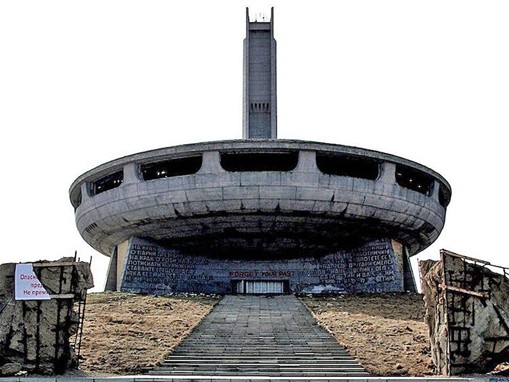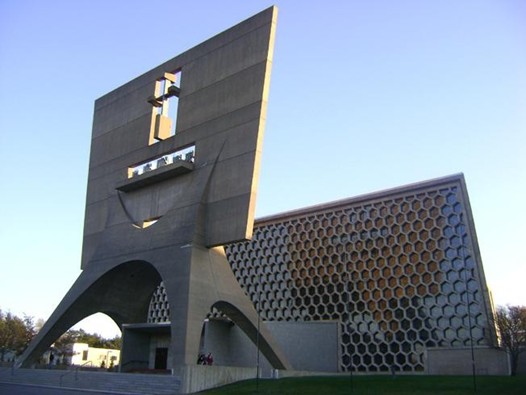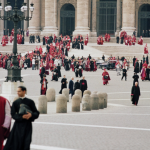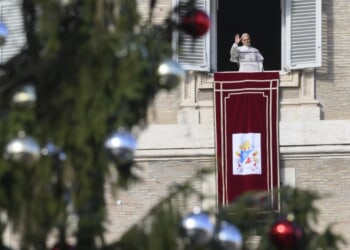Who is like the LORD, our God, who is enthroned on high and looks upon the heavens and the earth below?
Last Sunday’s psalm asked, Who is like the Lord? Through the centuries, that question had been on the lips of engineers, architects, and artists as they constructed magnificent buildings that glorified God. In glorifying Him, churches were built not only for verticality, which got people looking upward, but also for permanence. They were built for Him who is the beginning and the end, the One who does not change with the attitudes of the times.
When a pilgrim stepped out of the world and into a timeless church, he was given a much-needed reminder that a new world awaits the one who perseveres in faith. This is what the psalm means when it says, “He lifts up the poor and sits them with princes.” Those blinded to spiritual realities only see the material in a verse like that. They only see economic redistribution and equity, failing to see the hope in the heavenly promise.
Along with verticality and permanence, there is a third essential component found in sacred architecture. That third component is beauty. A scholar wrote:
God created beauty for the life of the soul. It has no corporal (bodily) usefulness. It does not satisfy hunger, shelter us from a storm or provide warmth. For the life of the body, beauty is perfectly useless. However, beauty is more useful than food, shelter and warmth. This is because beauty is useful to the soul, and the soul is worth more than the body. Since everything that is beautiful leads to God, it is natural that those who would destroy Christian civilization would want to diminish and eliminate beauty from the world. (Plinio Corrêa de Oliveira)
A few years ago, someone delivered a speech on beauty, in which he noted that he never hears politicians mention beauty—they only speak of ideas and ideology. The speaker explained:
And here’s how we know if the ideology is a good one: Noble ideologies produce beautiful results. They produce beauty. Poisonous ideologies produce ugliness. It’s super simple. There’s a reason the architecture in Bulgaria in 1975 was hideous—because Bulgaria’s capital (Sofia) in 1975 was controlled by the Soviet Union (Marxists headquartered in Moscow). The Soviet architecture was horrifying.
So was architecture under Mao (the ruthless Marxist dictator of China). They [Chinese Communists] knocked down everything worth having that was built during the preceding millennia, and they replaced it with concrete boxes.
Why did they do that? Because those boxes, those buildings, that architecture, that design sent a very clear message, which is: You are worth nothing. There’s no beauty for you.
Now, why is beauty so important and why do tyrants always destroy it?
Well, they destroy it because beauty reminds you that the most important things are eternal. Beauty is recognizable across cultures and across centuries. You can go to a place, a culture you’re completely unfamiliar with, and if you see something beautiful, you recognize it immediately. Why? Because beauty has balance and symmetry and grace. You know it instantly.
A beautiful face in one culture is very similar to a beautiful face in another culture.
I once looked up “Communist architecture—Bulgaria” and came across these photos below. The first one is the former communist headquarters in Bulgaria. I couldn’t help but think it looked like a concrete Millennium Falcon spaceship, the one Harrison Ford piloted in the 1976 film Star Wars. The top of it looks like the evil tower in Lord of the Rings, the Eye of Sauron, watching everyone 24/7. There is nothing in that building that glorifies God, likely because the Marxists who built it did not believe in God, and they did not want anyone else to believe in God either.


This next photo looks like a scary, monster-sized robot, or a nightmarish, drive-in movie screen made of concrete and steel. Is it also a former communist building in Bulgaria? No, it’s in Minnesota. It’s a church built in the late 1950s at what was one of the world’s largest Benedictine Abbeys.


The church construction was deemed “bold and visionary,” resulting “in a milestone in the evolution of Catholic church architecture.” In architectural-speak, this church is defined as brutalist, a style which was in fashion after World War II. A reviewer noted how there is no warmth or invitation in brutalist architecture, with its harsh lines, menacing concrete structures, and minimalist style.
The reviewer also noted that brutalist architecture is an external projection of the architect’s own ideology. And to judge an ideology, one has to look at its fruit. Look around at all the ugliness and unbelief and sin in the world today. Look around at all the bad ideas. Look around at all the ugly, soul-less architecture.
And so, “Who is like the LORD, our God, who is enthroned on high and looks upon the heavens and the earth below?” Yes, who is like the Lord? And who is the Lord enthroned on high? He is Jesus Christ, who was enthroned high on His cross to pay for our sins—the most beautiful thing in the world. That beautiful thing, that price of our ransom, takes place in a mysterious, timeless sacrifice at Holy Mass.
So, what are we to do with the time we have left on earth? Well, according to Christ and St. Luke, we better get busy like the dishonest steward who squandered his master’s money. The Lord praised the steward, not for his dishonesty, not for his crime, but for his prudence, his cunning craft, and cleverness shown in contriving it. (Lapide)
The steward did not deserve mercy, but he got it anyway. He did so because he did not sit back and tell himself that he was saved by faith alone. Instead, he put forth effort toward redeeming himself, and his merciful master took that into account. A commentator summarized:
The fact that we can count on God’s grace does not in any way exempt us from the need to employ all available legitimate human resources even if that means strenuous effort and heroic sacrifice. (Navarre)
My friends, look up to the heavens, and meditate on the moment you meet your Master. Hear Him ask the question: “What is this I hear about you?” Like the dishonest steward, you can say, “I know I owe you my life, with interest. But all I have is a percentage of what I squandered.” He will then commend you, not for your crimes, but for your strenuous effort and heroic sacrifice in making reparation for those crimes. Then He will raise you from your lower, fallen state to a higher one, a permanent one, where there will be beauty for you—forever.
Photo by Sofia Vila Flor on Unsplash

















